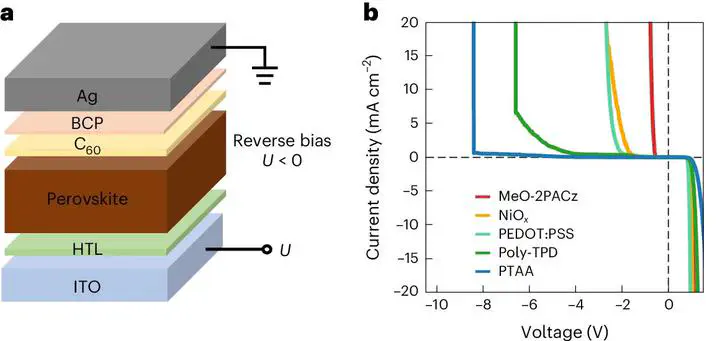Improved reverse bias stability in p-i-n perovskite solar cells with optimized hole transport materials and less reactive electrodes

Abstract
As perovskite photovoltaics stride towards commercialization, reverse bias degradation in shaded cells that must current match illuminated cells is a serious challenge. Previous research has emphasized the role of iodide and silver oxidation, and the role of hole tunnelling from the electron-transport layer into the perovskite to enable the flow of current under reverse bias in causing degradation. Here we show that device architecture engineering has a significant impact on the reverse bias behaviour of perovskite solar cells. By implementing both a similar to 35-nm-thick conjugated polymer hole transport layer and a more electrochemically stable back electrode, we demonstrate average breakdown voltages exceeding -15 V, comparable to those of silicon cells. Our strategy for increasing the breakdown voltage reduces the number of bypass diodes needed to protect a solar module that is partially shaded, which has been proven to be an effective strategy for silicon solar panels.